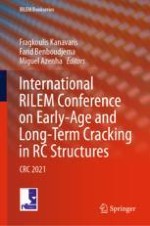2021 | OriginalPaper | Buchkapitel
Bacteria Based Self-healing of Later-Age Cracks in Concrete
verfasst von : Lorena Skevi, Bianca Reeksting, Susanne Gebhard, Kevin Paine
Erschienen in: International RILEM Conference on Early-Age and Long-Term Cracking in RC Structures
Aktivieren Sie unsere intelligente Suche, um passende Fachinhalte oder Patente zu finden.
Wählen Sie Textabschnitte aus um mit Künstlicher Intelligenz passenden Patente zu finden. powered by
Markieren Sie Textabschnitte, um KI-gestützt weitere passende Inhalte zu finden. powered by
